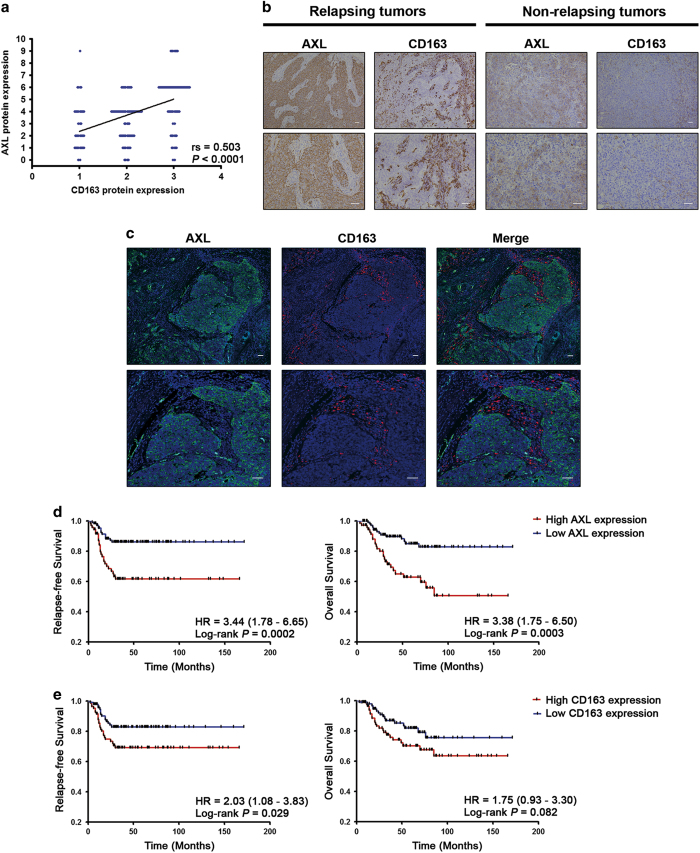Figure 2.
AXL expression correlates with the infiltration of CD163-positive cells in tumor stroma and is associated with survival in triple-negative breast cancer. (a) A scatter diagram shows a positive correlation between immunohistochemical staining of AXL and CD163 in TNBC (N=203; Spearman’s coefficient, rS=0.503; P<0.0001). (b) Representative immunohistochemical staining of AXL and CD163 in tumor samples of serial sections from TNBC patients with recurrence (left panel) and without recurrence (right panel). Scale bars represent 50 μm. (c) Representative pictures of double immunofluorescent staining and confocal microscopy of TNBC sections, showing that AXL-expressing cancer cells (green) are in close contact with adjacent stromal TAMs (red). Scale bars represent 50 μm. (d) Kaplan–Meier analysis for relapse-free survival (left panel) and overall survival (right panel) according to AXL immunohistochemical score. TNBC patients (N=203) were stratified by low (0–4) or high (6–9) AXL expression. (e) Kaplan–Meier analysis for relapse-free survival (left panel) and overall survival (right panel) according to the content of CD163-positive cells in tumor stroma. TNBC patients (N=203) were stratified by absent/moderate (0–2) or dense (3) CD163-positive macrophage infiltration. Curves were compared using log-rank test. P values and HR (95% CI in parentheses) are shown. CI, confidence interval; HR, hazard ratio; TNBC, triple-negative breast cancer.

